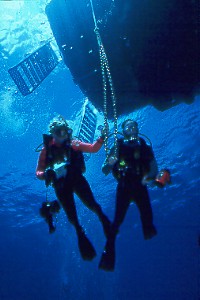| Home |
Diving the Meso-American Barrier Reef of Belize
Belize is a small country in Central America bordered by the Caribbean Sea on the east, Guatemala on the west and south, and Mexico to the north. Belize is also known for its extreme biodiversity and distinctive ecosystems. On the coast, there is a swampy coastal plain with mangrove swamps. In the south and interior there are hills and low mountains. Most of the land is undeveloped and is forested with hardwoods.
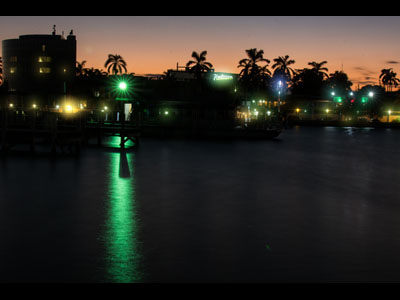 Belize City at Nighta Belize City at Nighta
 Belize Homes Belize Homes
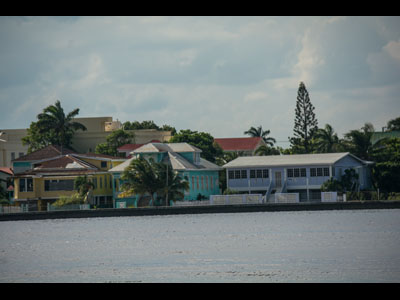 Belize Homes Belize Homes
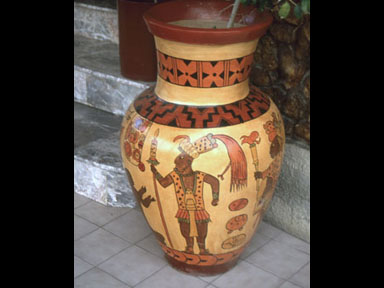 Belize Vase Belize Vase
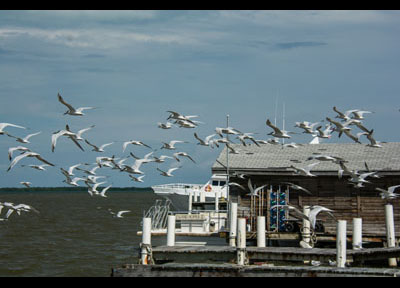 Flying Gulls Flying Gulls
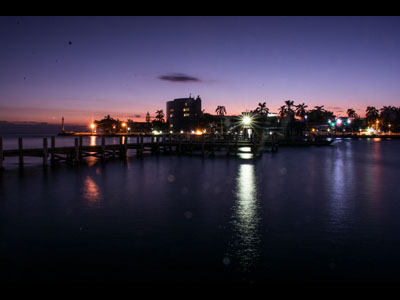 Belize City At Night Belize City At Night
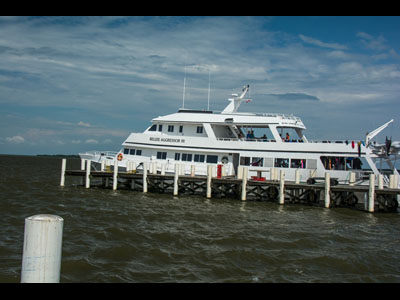 Belize AggressorIII Belize AggressorIII
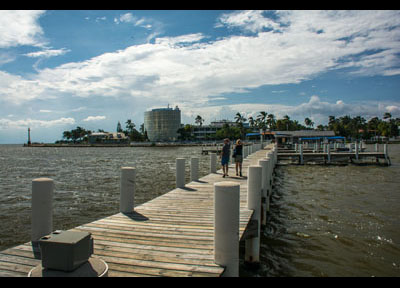 Pier Pier
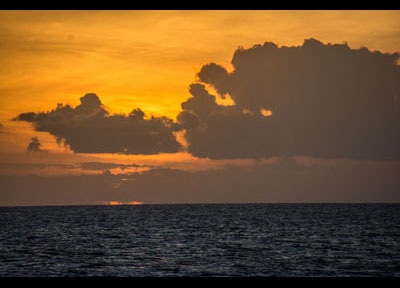 Sunset Sunset
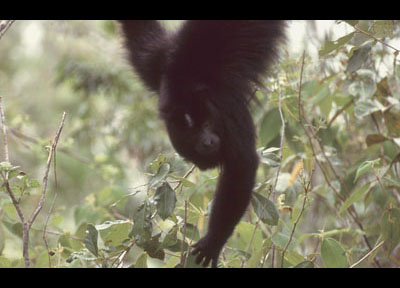 Howler Monkey Howler Monkey
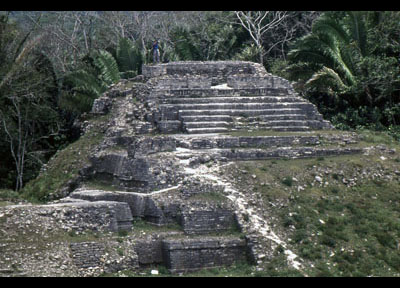 Altun Ha 1992 Altun Ha 1992
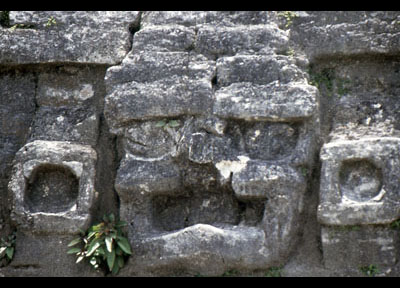 Mayan Stone Figures Mayan Stone Figures
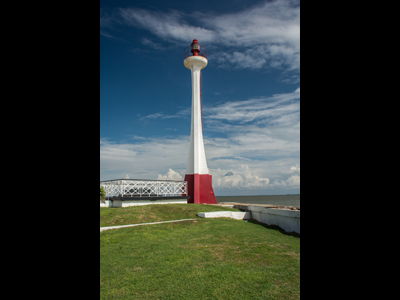 Lighthouse Lighthouse
 Belize City at Night Belize City at Night
History
Belize is a part of the Meso-American Biodiversity Hotspot and contains jungles, wildlife reserves and a large variety of flora and fauna. In addition, it also hosts the largest cave system in Central America. Some species of Belize's flora and fauna include the black orchid, the mahogany tree, the toucan and tapirs.
The first people to develop Belize were the Maya around 1500 B.C.E. As shown in archeological records, they established a number of settlements here including Caracol, Lamanai and Lubaantun. The first European contact with Belize occurred in 1502 when Christopher Columbus reached the area's coast. In 1638, the first European settlement was established by England and, for 150 years, many more English settlements were set up. The Belizean people are made up of Maya, Mestizo, Creole, Garifuna, East Indian, Mennonite, Arab and Chinese.
In 1840, Belize became a "Colony of British Honduras" and in 1862, it became a crown colony. For one hundred years, Belize maintained a representative government of England but in January 1964, full self government with a ministerial system was granted. In 1973, the region's name was changed from British Honduras to Belize and on September 21, 1981, full independence was achieved.
English is the official language, and Spanish, African-based Garifuna, Maya-Kekchi, Maya Mopan, Mandarin, and German are just a few of the languages that form the unique dialects that are spoken throughout the country.
Touring And Diving Belize
We visited Belize in 1992, 2005, and 2014, to experience the country and to dive and photograph the second largest barrier reef in the world. The country is known for its Mayan ruins, Eco-Lodges near the Guatemalan border, the Belize Zoo, jaguars, birds, and of course, its offshore reefs. Recently, large resorts and casinos have sprung up near Belize City. Now one can also enjoy zip lining and cave tubing through the jungle, in addition to eco tours of the wildlife preserves.
The purpose of this article, though, is to talk about the reefs and the changes we have seen over the past 25 years. We have always dived these reefs from a live-aboard dive boat. We felt that was the only way to experience the scope of what Belize diving has to offer. The Aggressor and the Dancer Fleet both run live-aboard dive boats. They dock at the Marina at the Raddisson Fort George Hotel in Belize City. It is a nice safe hotel to stay in both before and after your dive trip. One should try and spend time exploring the country.
Our first trip in 1992 showed a reef filled with sea fans, sea whips, hard corals, beautiful walls with huge elephant ear and tube sponges, soft corals and very little algae. We encountered fairly large but not huge grouper, tarpon and a large variety of indigenous Caribbean fish. The water seemed clearer than it is today, given the same weather conditions.The photos below were taken on our most recent trip.
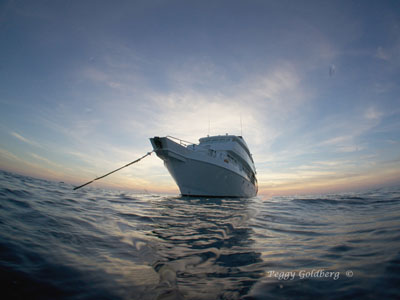 Belize Aggressor At Sea Belize Aggressor At Sea
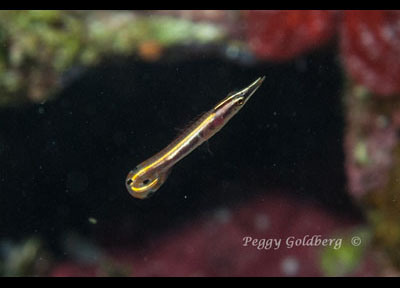 Arrow Blenny Arrow Blenny
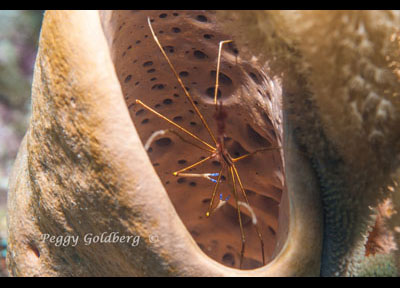 Arrowcrab Arrowcrab
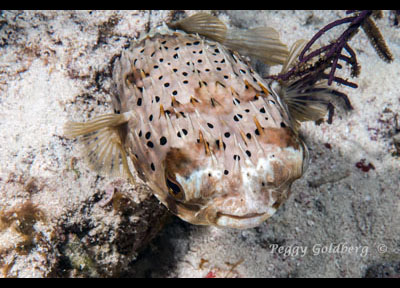 Balloonfish Balloonfish
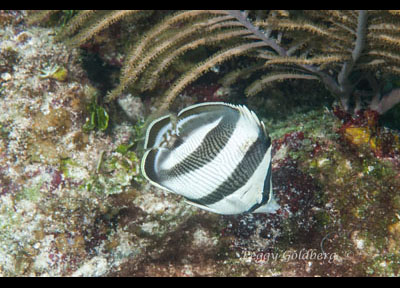 Banded Butterflyfish Banded Butterflyfish
 Barrel Sponge Barrel Sponge
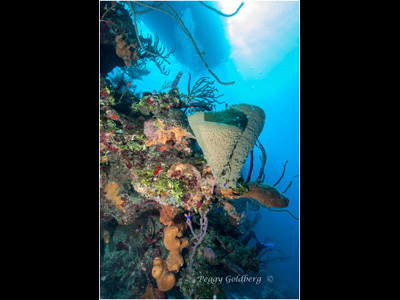 Belize Wall and Boat Belize Wall and Boat
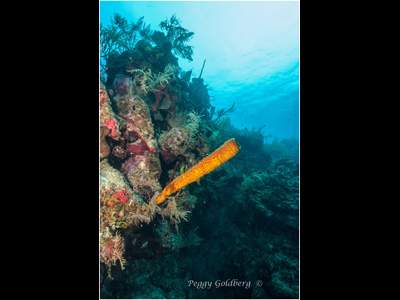 Belize Wall Tube Sponge Belize Wall Tube Sponge
 Diver And Barrel Sponge Diver And Barrel Sponge
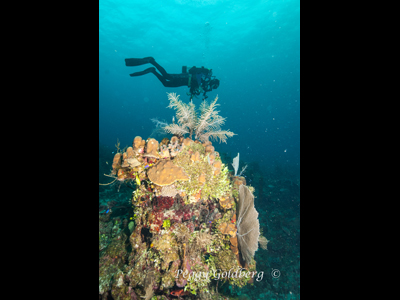 Diver And Coral Head Diver And Coral Head
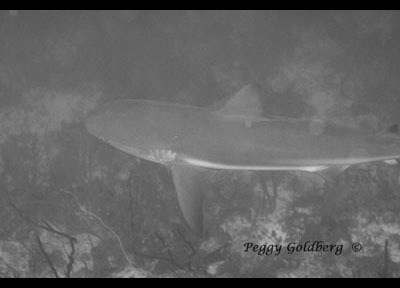 Blacktip Shark Blacktip Shark
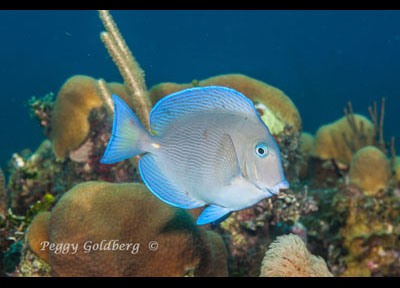 Blue Tang Blue Tang
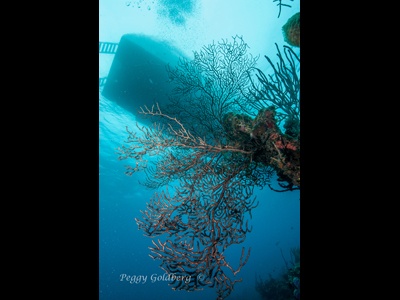 Boat and Sea Fans Boat and Sea Fans
 Boat and Wall Boat and Wall
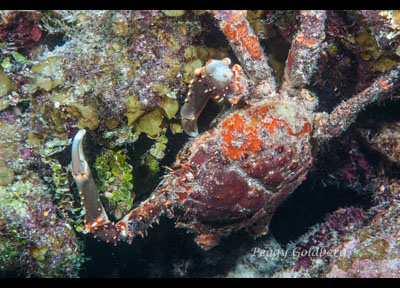 Channel Clinging Crab Channel Clinging Crab
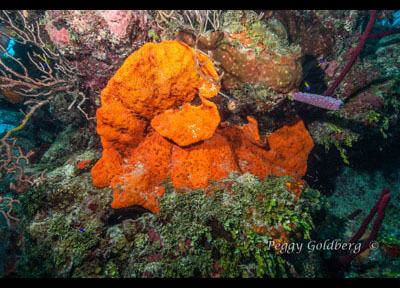 Elephant Ear Sponge Elephant Ear Sponge
 Elliptical Star Coral Closeup Elliptical Star Coral Closeup
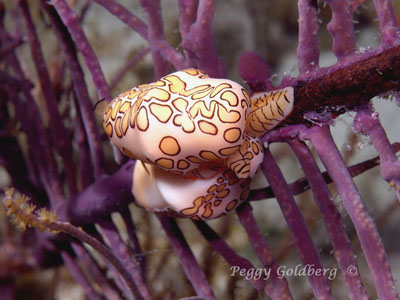 Flamingo Tongue Flamingo Tongue
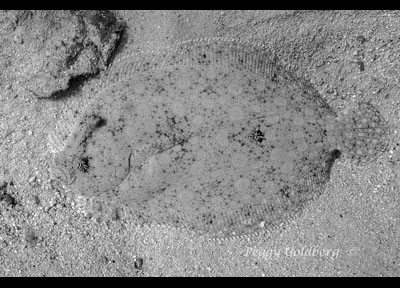 Flounder Flounder
 French Angel French Angel
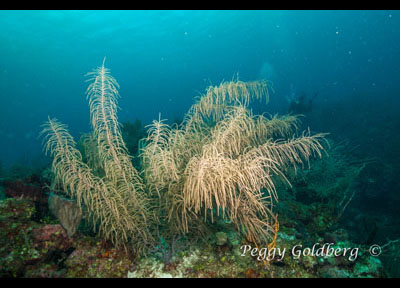 Gorgonians Gorgonians
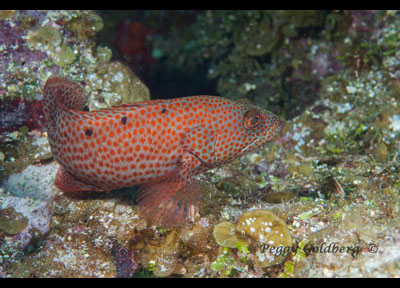 Graysby Graysby
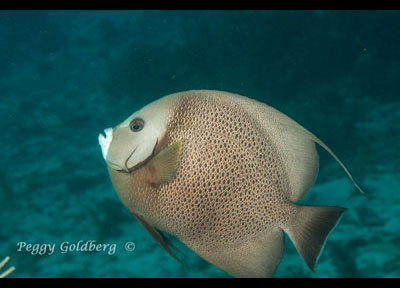 Grey Angel Grey Angel
 Grouper Face Grouper Face
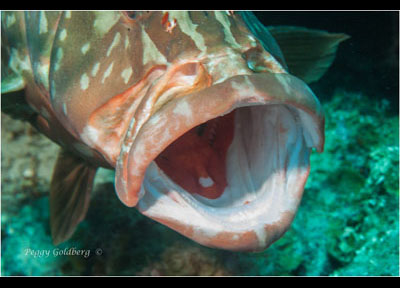 Grouper Mouth Grouper Mouth
 Grouper Grouper
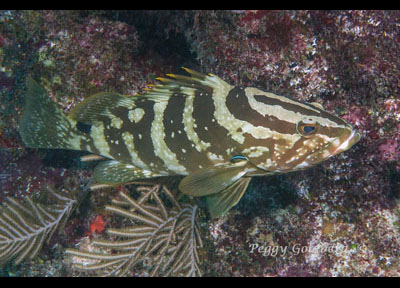 Grouper With Cleaner Blenny Grouper With Cleaner Blenny
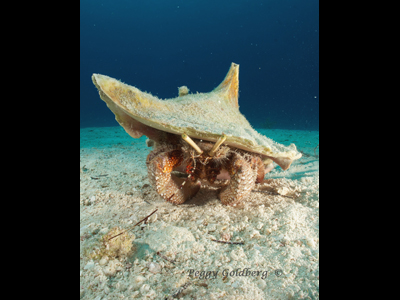 Hermit Crab Hermit Crab
 Belize Wall and Boat Belize Wall and Boat
The Belize Blue Hole
We dove the Blue Hole, a dark blue round 450' deep "cave" where the roof had collapsed over time, which invites divers to see huge stalactites. Now completely underwater, these formations took thousands of years to form, when the seas were much lower and this was a dry cave. The stalactites start at about 100' and go down to over 170'. In 1992, the growths of encrusting sponges and other soft corals were vibrant, and the visibility good enough to see the surface from 150' down. In 2014, the stalactites were covered in algae, and the visibility was terrible, the water was almost green. The reef top at 20' used to have the most beautiful formations, staghorn corals, sea fans, sea whips, and a lot of fish life. Today, all that is gone, and what remains is covered in algae. It was hard to find much of the former sea life we had seen previously.
On the two subsequent trips to these reefs, we noticed some definite changes. Over the years, the sea temperatures had risen, the urchin population (which eats algae), had disappeared, algae growth was becoming more prominent, and the bigger fish were gone. Elkhorn and staghorn corals were gone. Lionfish, an invasive species, have found their way into that ecosystem. They are voracious eaters of every smaller fish. But, what is happening in Belize is not unique, it is happening worldwide.
 Blue Hole 2014 Blue Hole 2014
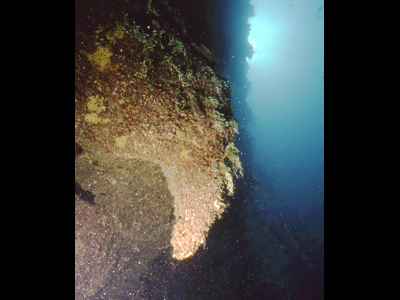 Belize Blue Hole 1992 Belize Blue Hole 1992
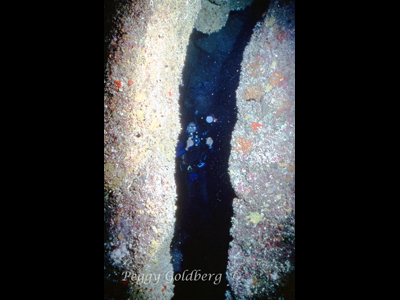 Belize Blue Hole 1992 Belize Blue Hole 1992
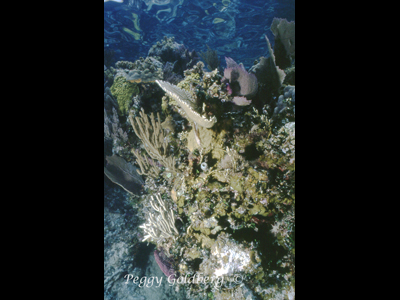 Belize Blue Hole 1992 Belize Blue Hole 1992
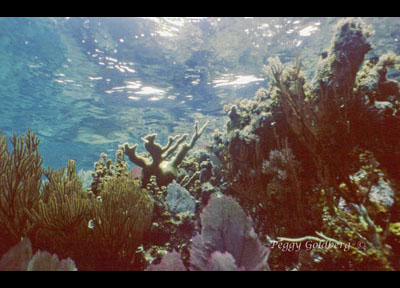 Belize Blue Hole Reef 1992 Belize Blue Hole Reef 1992
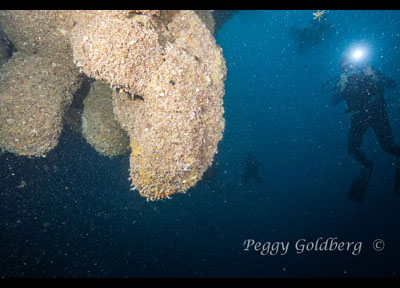 Blue Hole Stalagtite 2014 Blue Hole Stalagtite 2014
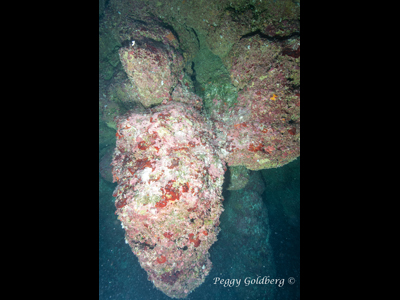 Blue Hole Stalagtite 2014 Blue Hole Stalagtite 2014
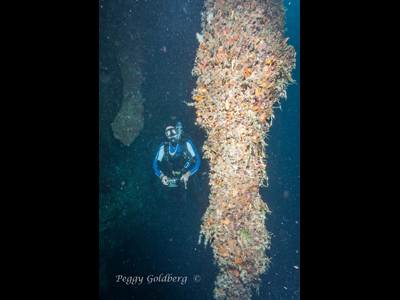 Blue Hole Stalagtite 2014 Blue Hole Stalagtite 2014
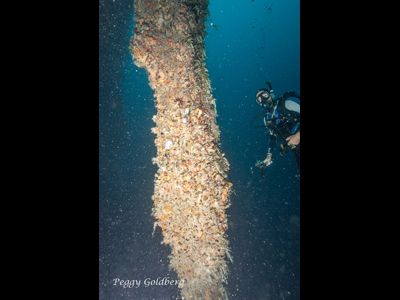 Blue Hole Stalagtite 2014 Blue Hole Stalagtite 2014
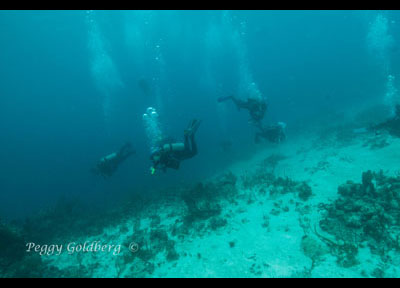 Blue Hole Reef 2014 Blue Hole Reef 2014
 Octopus at Home Octopus at Home
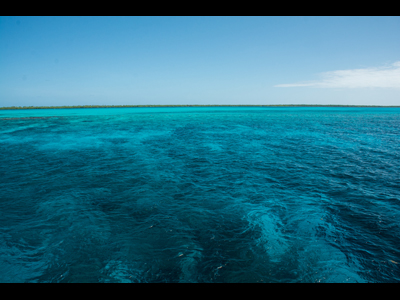 Offshore Offshore
 Blue Hole 2014 Blue Hole 2014
The Reefs - Conditions and Bio-Diversity
That said, we still found the Belize reefs to be beautiful. There are still the famous tube and elephant ear sponges, large sea fans, sea whips and hard corals covering the reef. The reef actually seemed better than we remembered in 2005. Although the large grouper are gone- there were still medium sized grouper that could become huge in time if left alone. The reefs are not covered in the slimy algae that we have seen in other places. Because this reef (the second longest in the world) was so far offshore, runoff from rains generally did not affect it.
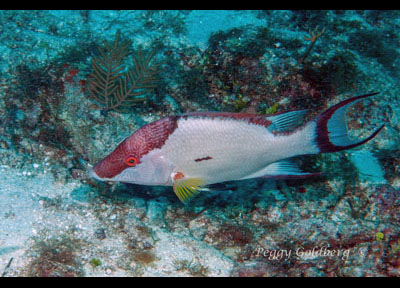 Hogfish Hogfish
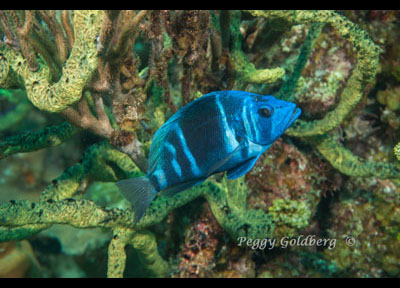 Indigo Hamlet Indigo Hamlet
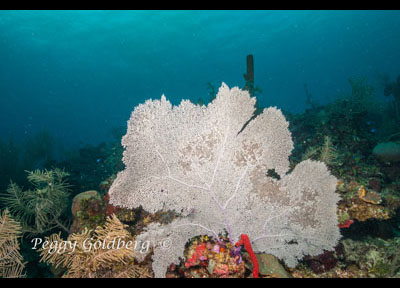 Large Sea Fan Large Sea Fan
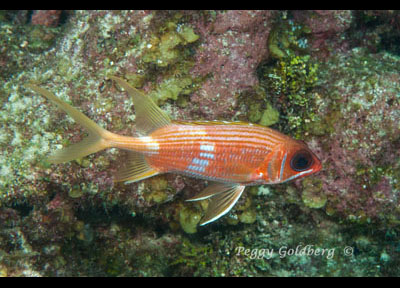 Longjaw Squirrellfish Longjaw Squirrellfish
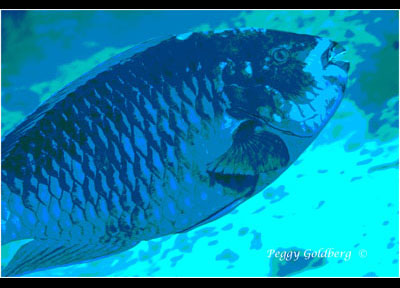 Midnight Parrotfish Midnight Parrotfish
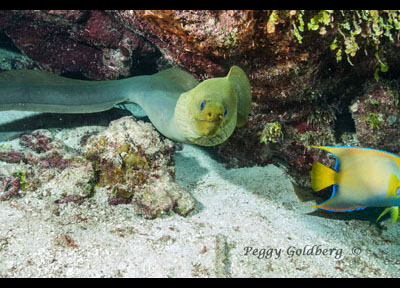 Moray And Angelfish Moray And Angelfish
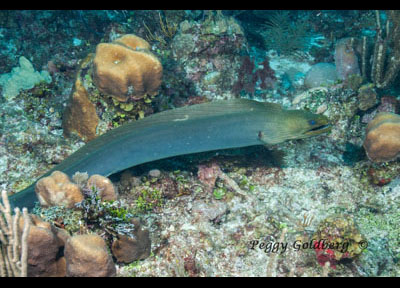 Moray Eel Moray Eel
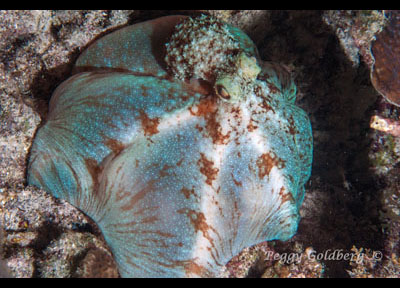 Octopus Octopus
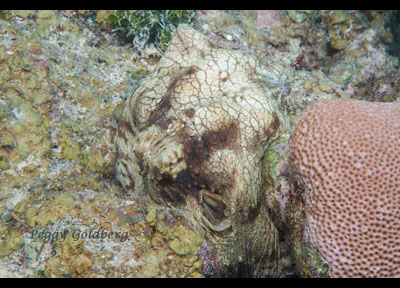 Octopus Eating Conch Octopus Eating Conch
 Porkfish Porkfish
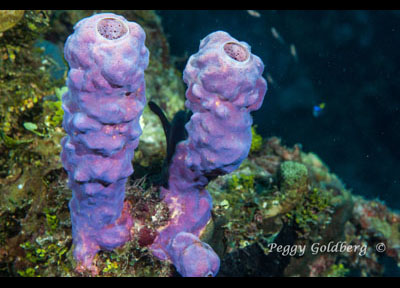 Purple Sponges Purple Sponges
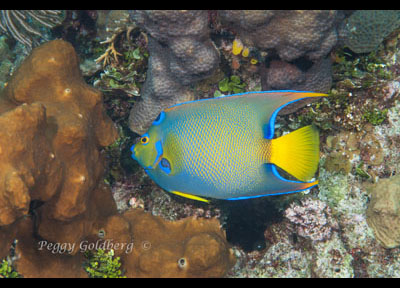 Queen Angelfish Queen Angelfish
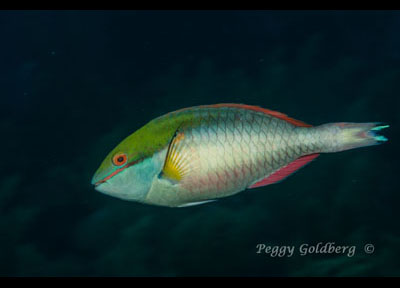 Redband Parrotfish -Terminal Phase Redband Parrotfish -Terminal Phase
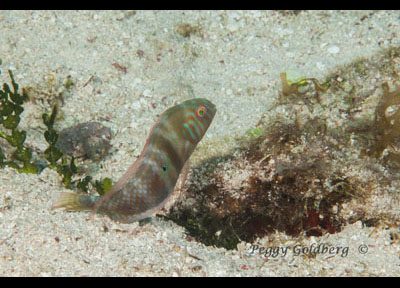 Rose Blenny Rose Blenny
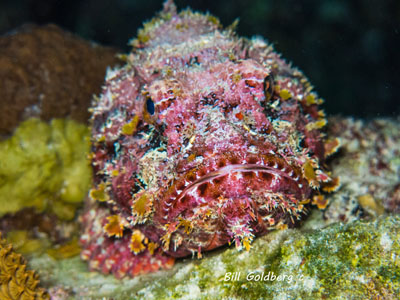 Scorpionfish Scorpionfish
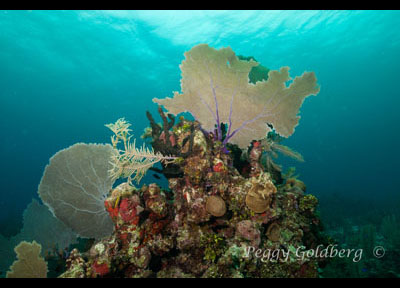 Sea Fans and Coral Head Sea Fans and Coral Head
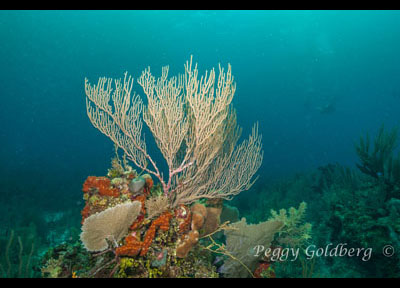 Sea Rods Sea Rods
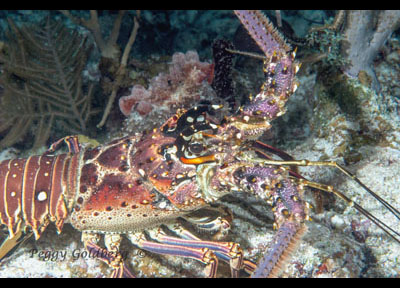 Spiny Lobster Spiny Lobster
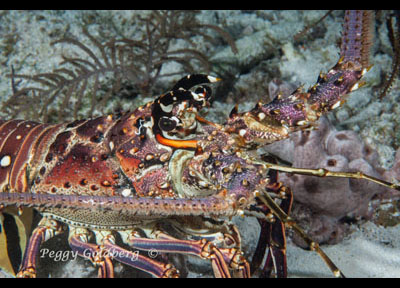 Spiny Lobster Closeup Spiny Lobster Closeup
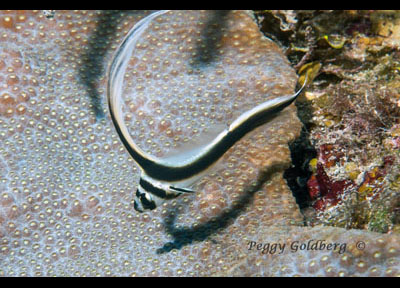 Spotted Drum Juvenile Spotted Drum Juvenile
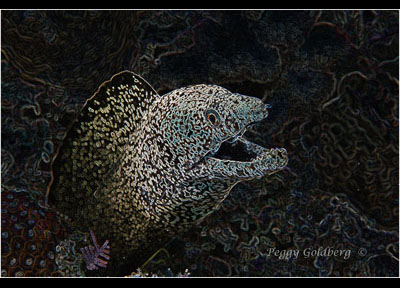 Spotted Moray Spotted Moray
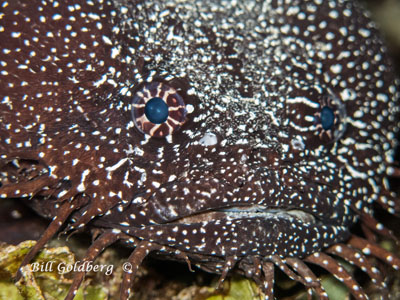 Spotted Toadfish Spotted Toadfish
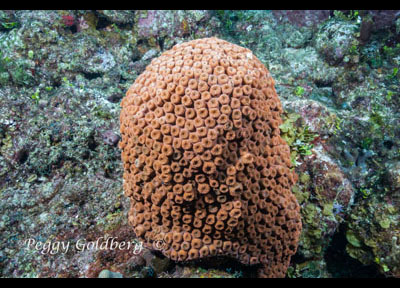 Star Coral Star Coral
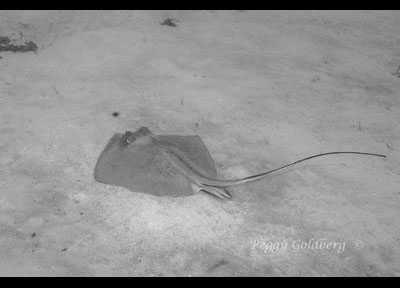 Stingray Stingray
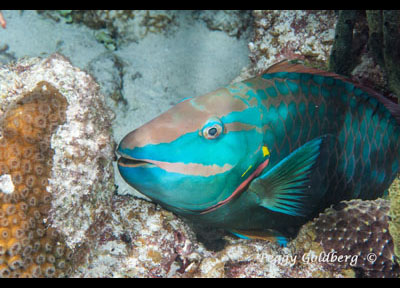 Stoplight Parrotfish Stoplight Parrotfish
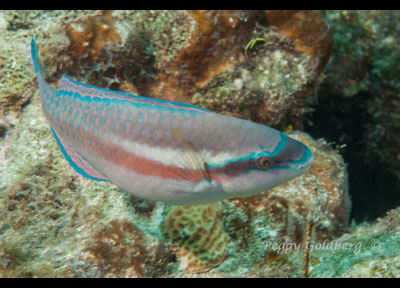 Striped Parrotfish Striped Parrotfish
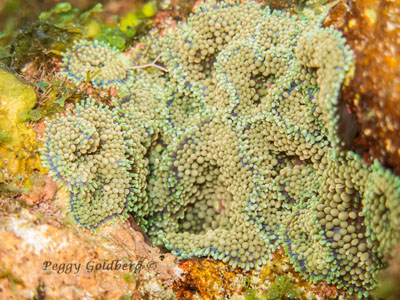 Sun Anemone Sun Anemone
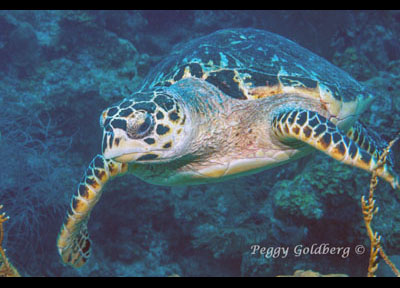 Turtle Turtle
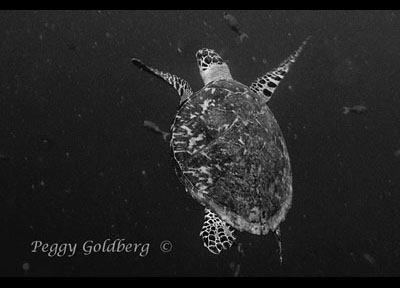 Turtle BW Turtle BW
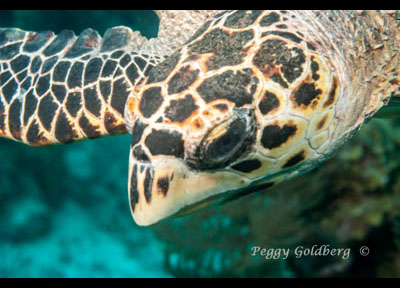 Turtle Head Turtle Head
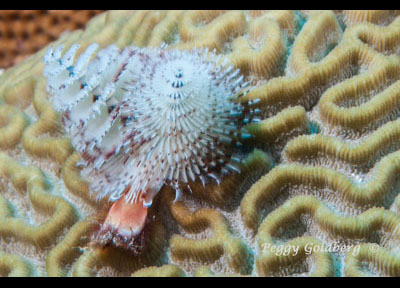 Xmas Tree Worm Xmas Tree Worm
 Xmas Tree Worm Xmas Tree Worm
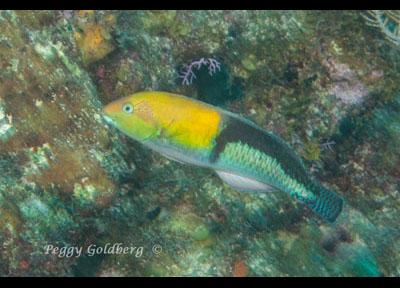 Yellowheaded Wrasse Yellowheaded Wrasse
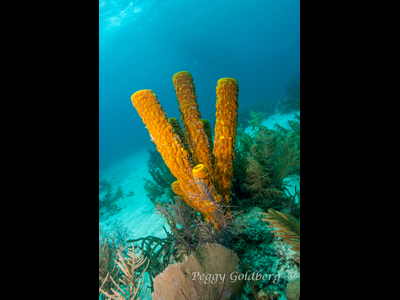 Yellow Tube Sponges Yellow Tube Sponges
 Midnight Parrotfish Midnight Parrotfish
When we dove in November, we experienced high winds, rain, and confused seas, which affected our visibility greatly. However, when the wind subsided on one day- the blue green bright color of the sea returned, and we could see to the bottom, and count the fish.
We enjoy diving here not only because of the diversity of the marine life, both big and small, but because diving off the live-aboard is so easy. You just jump off the back dive deck and make your dive. Once your gear is set up in the beginning of the week, all you do is suit up, sit and buckle your gear on, and off you go. The crew will help you with anything you need. You are spending your time diving, eating, sleeping, and downloading your photos. The food is always fantastic and plentiful.
The Outer Islands - Half Moon Cay - and the future
We did get to explore Half Moon Cay, a magnificent frigate bird and blue footed booby rookery and sanctuary run by the Belize Audubon Society. One can get close up and personal with these birds high in their nests by climbing the viewing tower into the treetops and watch the male frigates expand their red throat sacs to entice females. On the ground, iguanas and land crabs ruled. The island was a nice photo op, and a perfect place to off gas from our deep dive in the Blue Hole.
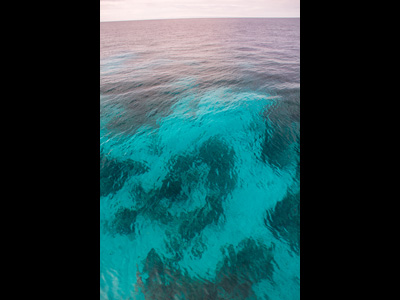 ClearWater ClearWater
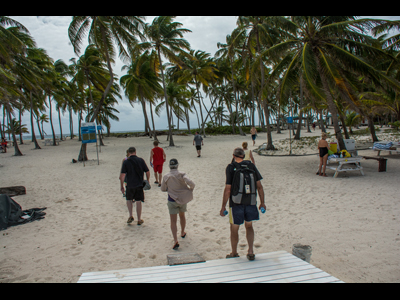 Exploring Half Moon Exploring Half Moon
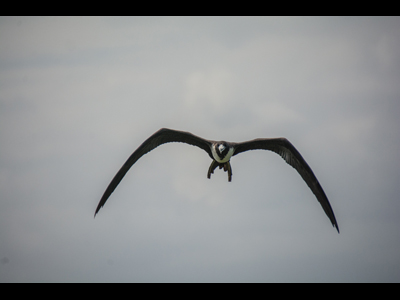 Frigate Bird Frigate Bird
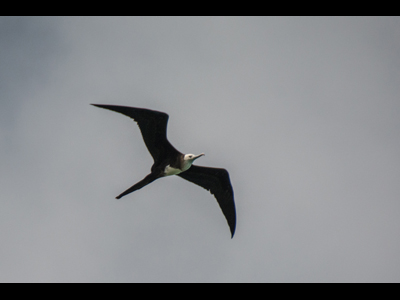 Frigate Bird Frigate Bird
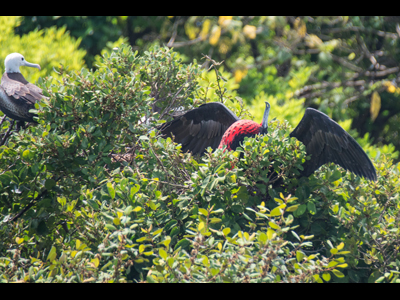 Frigate Display Frigate Display
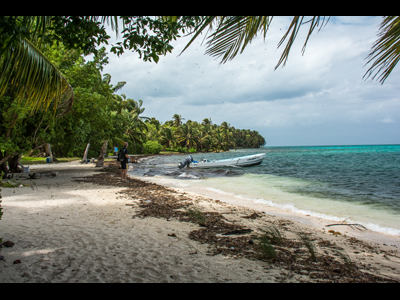 Half Moon Boat Half Moon Boat
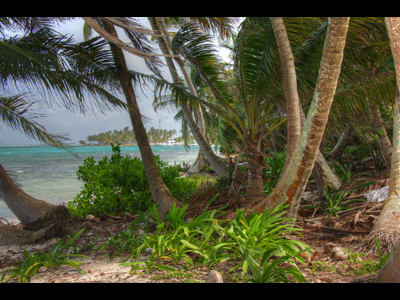 Half Moon Cay Half Moon Cay
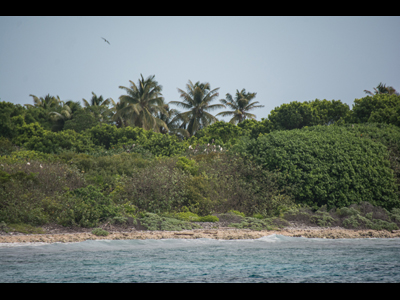 Half Moon Cay Half Moon Cay
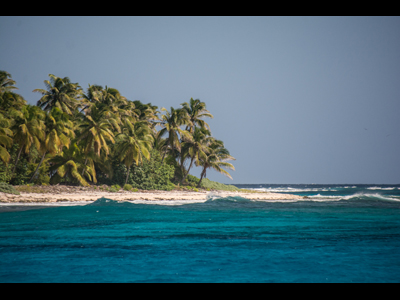 Half Moon Cay Half Moon Cay
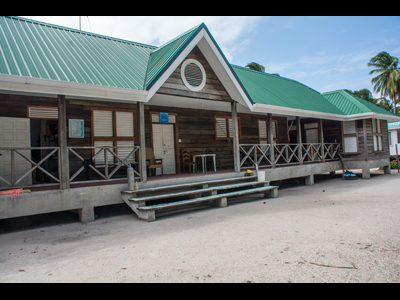 Half Moon Cay Museum Half Moon Cay Museum
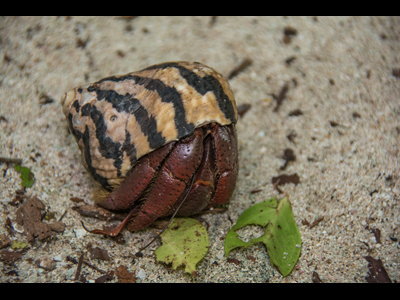 Land Crab Closeup Land Crab Closeup
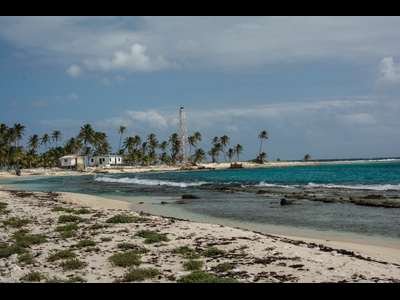 Lighthouse Lighthouse
 Offshore Offshore
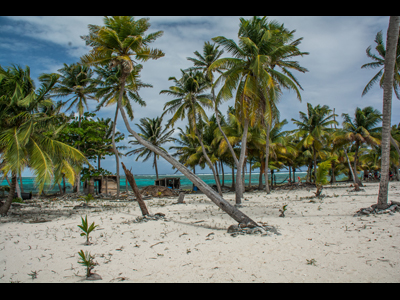 Palms Palms
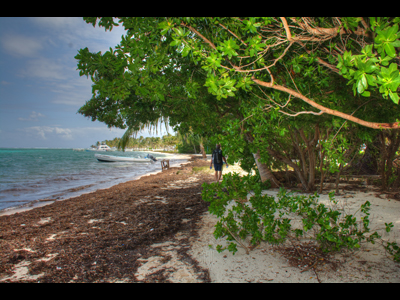 Palms Palms
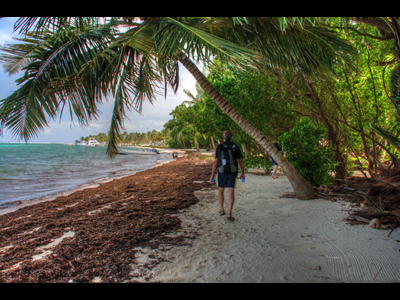 Palms Palms
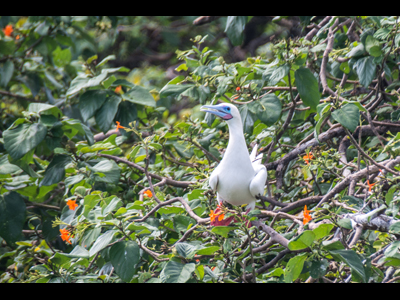 Red Footed Boobie Red Footed Boobie
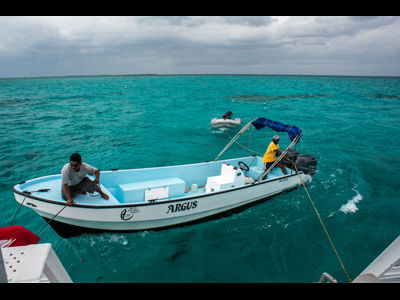 Tender To HalfMoon Cay Tender To HalfMoon Cay
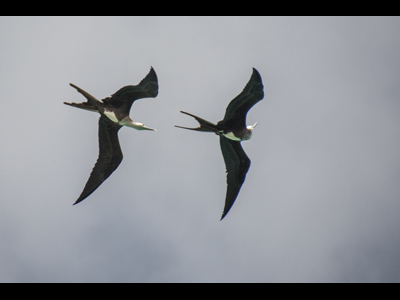 Two Frigates Two Frigates
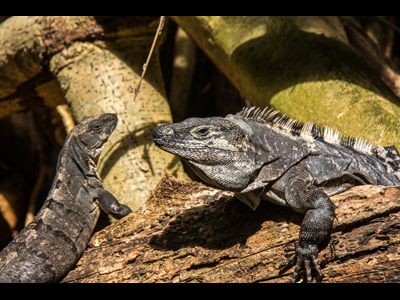 Two Iguanas Two Iguanas
 HalfMoon Cay and Boat HalfMoon Cay and Boat
On these outer islands, there are land based resorts for divers, so if staying on a live-aboard is not to your liking, or you have non divers in the group, a stay at a resort would allow everyone to enjoy their time there. Activities are limited on these island resorts, walking, relaxing on the beaches or in a hammock under the palms, sea kayaking, snorkeling or diving, and fishing. You are limited to the island or close by reefs for diving, whereas the live-aboard travels throughout the reef system.
We have to be hopeful that we can turn things around, and the seas and earth can recover from the ravages of climate change. We also have to be very careful to not introduce invasive species that can tip the fragile ecosystems into decline. We also need to reduce the amount of plastic we throw into our waterways that results in killing wildlife and fouling our waters. If we can't do that, you need to go now and visit places like Belize, because the reefs will not be there in the very near future.
___________________________________
|
[Home] [ Articles] [Classes] [Commercial] [Photo Tips] [Photo Gallery]
Please contact our Webmaster with questions or comments.
©
Copyright
2000-2021 Golden Images, Inc. All rights
reserved.
|
